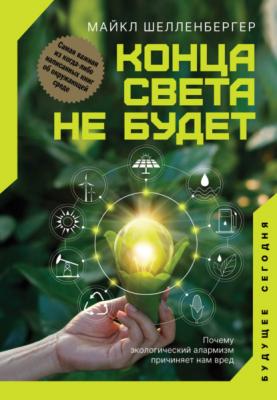ТОП просматриваемых книг сайта:
Конца света не будет. Почему экологический алармизм причиняет нам вред. Майкл Шелленбергер
Читать онлайн.Название Конца света не будет. Почему экологический алармизм причиняет нам вред
Год выпуска 2020
isbn 978-5-17-139017-4, 978-0063-00169-5
Автор произведения Майкл Шелленбергер
Серия Будущее сегодня
Издательство Издательство АСТ
391
FAO projects that the amount of arable land and permanent crop area will stay nearly flat through 2050, as detailed in its report on the subject. Nikos Alexandratos and Jelle Bruinsma, “World Agriculture Towards 2030/2050: The 2012 Revision,” ESA Working Paper no. 12-03, Agricultural Development Economics Division, Food and Agriculture Organization of the United Nations, June 2012, http://www.fao.org/3/a-ap106e.pdf.
392
Per FAO, global per capita kilocalorie production was 2,196 in 1961 and 2,884 in 2013. Along with the global population increase from 3.1 billion to 7.2 billion between 1961 and 2013, global food production has tripled. The amount of global land used for agriculture increased from 4.5 billion to 4.8 billion hectares over the same period. “Data,” FAO.
393
Per FAO, global per capita kilocalorie production was 2,196 in 1961 and 2,884 in 2013. Along with the global population increase from 3.1 billion to 7.2 billion between 1961 and 2013, global food production has tripled. The amount of global land used for agriculture increased from 4.5 billion to 4.8 billion hectares over the same period. “Data,” FAO.
394
Per FAO, global per capita kilocalorie production was 2,196 in 1961 and 2,884 in 2013. Along with the global population increase from 3.1 billion to 7.2 billion between 1961 and 2013, global food production has tripled. The amount of global land used for agriculture increased from 4.5 billion to 4.8 billion hectares over the same period. “Data,” FAO.
395
Changes in Farm Production and Efficiency: A Summary Report, United States Department of Agriculture, Statistical Bulletin 233 (Washington, DC: USDA, 1959), 12–13.
396
A. Bala, “Nigeria,” Global Yield Gap and Water Productivity Atlas, http://www.yieldgap.org/en/web/guest/nigeria. Nikolai Beilharz, “New Zealand farmer sets new world record for wheat yield,” ABC News, April 3, 2017, https://www.abc.net.au. Matthew B. Espe, Haishun Yang, Kenneth G. Cassman et al., “Estimating Yield Potential in Temperate High-Yielding, Direct-Seeded US Rice Production Systems,” Field Crops Research 193 (July 2016): 123–32, https://doi.org/10.1016/j.fcr.2016.04.003. Though average yields for some crops such as wheat have plateaued, there is still more room for them to increase. In 2017, a farmer in New Zealand produced an astonishing eight times as much wheat as the Australian average and five times as much as the global average.
397
FAO, The future of food and agriculture – Alternative pathways to 2050 (Rome: Food and Agriculture Organization of the United Nations, 2018), 76–77.
398
Nathaniel D. Mueller, James S. Gerber, Matt Johnston et al., “Closing Yield Gaps Through Nutrient and Water Management,” Nature 490 (2012): 254–57, https://doi.org/10.1038/nature11420.
399
Deepak K. Ray, “Increasing Global Crop Harvest Frequency: Recent Trends and Future Directions,” Environmental Research Letters 8 (2013), https://iopscience.iop.org/article/10.1088/1748-9326/8/4/044041/pdf.
400
Luis Lassaletta, Gilles Billen, Bruna Grizzetti et al., “50 Year Trends in Nitrogen Use Efficiency of World Cropping Systems: The Relationship between Yield and Nitrogen Input to Cropland,” Environmental Research Letters 9, no. 10 (October 2014), https://doi.org/10.1088/1748-9326/9/10/105011.
401
“Changes in Erosion 1982–1997,” U.S. Department of Agriculture, January 4, 2001, https://www.nrcs.usda.gov/wps/portal/nrcs/detail/soils/ref/?cid=nrcs143_013911. FAO data on crop yields show almost every major crop increasing in yield in the United States between 1982 and 1997. “Data,” FAO.
402
Suparti (factory worker) in discussion with the author, June 8–9, 2015.
403
James C. Riley, “Estimates of Regional and Global Life Expectancy, 1800–2001,” Population and Development Review 31, no. 3 (2005), 537–543, accessed January 16, 2020, www.jstor.org/stable/3401478, “World Population Prospects 2019: Highlights,” United Nations, accessed January 14, 2020, https://www.un.org/development/desa/publications/world-population-prospects-2019-highlights.html.
404
Max Roser, Hannah Ritchie, and Bernadeta Dadonaite, “Child and Infant Mortality,” Our World in Data, November 2019, https://ourworldindata.org/child-mortality. The world series for 1800 to 1960 was calculated by the authors on the basis of the Gapminder estimates of child mortality and the Gapminder series on population by country. For each estimate in that period a population-weighted global average was calculated. The 2017 child mortality rate was taken from the 2019 update of World Bank data.
405
Steven Pinker, Enlightenment Now: The Case for Reason, Science, Humanism, and Progress (New York: Penguin Publishing Group, 2019), 86–87.
406
“PovcalNet: An Online Analysis Tool for Global Poverty Monitoring,” World Bank Group, accessed October 29, 2019, http://iresearch.worldbank.org/PovcalNet/home.aspx.
407
Max Roser, Hannah Ritchie, and Esteban Ortiz-Ospina, “World Population Growth,” Our World In Data, May 2019, accessed January 16, 2020, https://ourworldindata.org/world-population-growth.
408
Max Roser, Hannah Ritchie, and Esteban Ortiz-Ospina, “World Population Growth,” Our World In Data, May 2019, accessed January 16, 2020, https://ourworldindata.org/world-population-growth.

